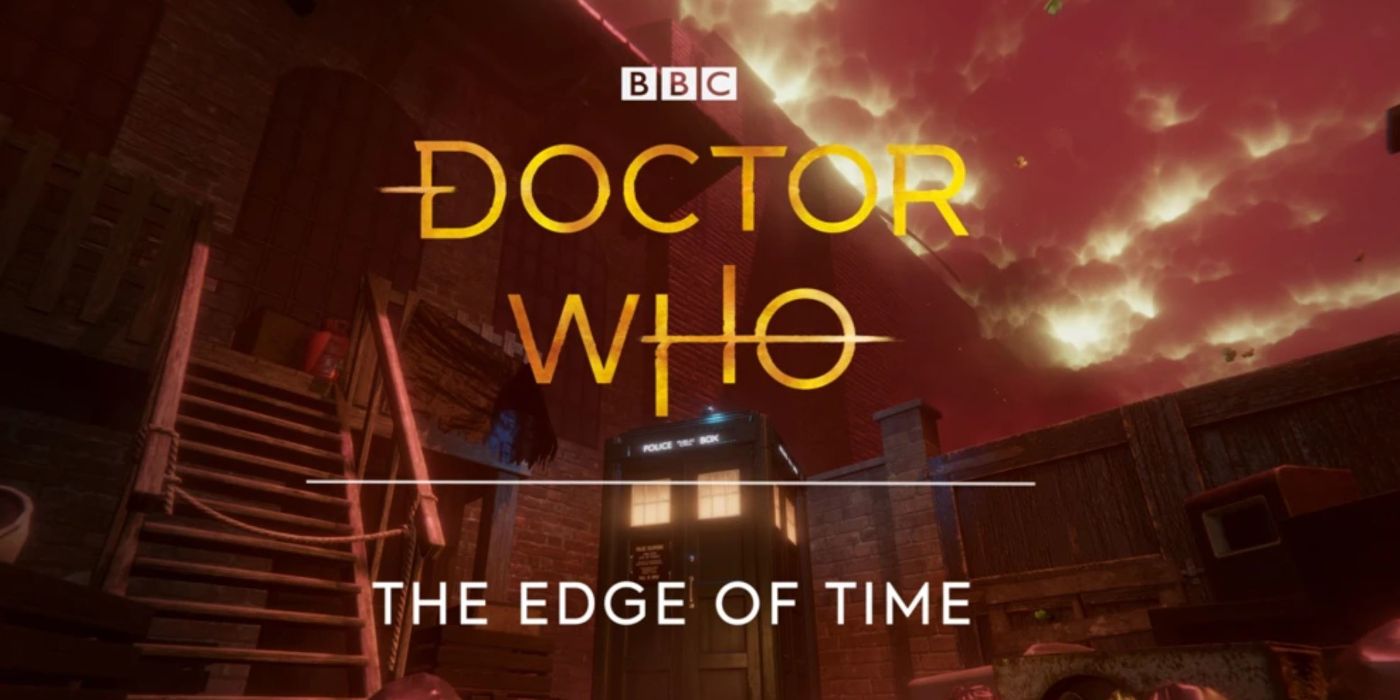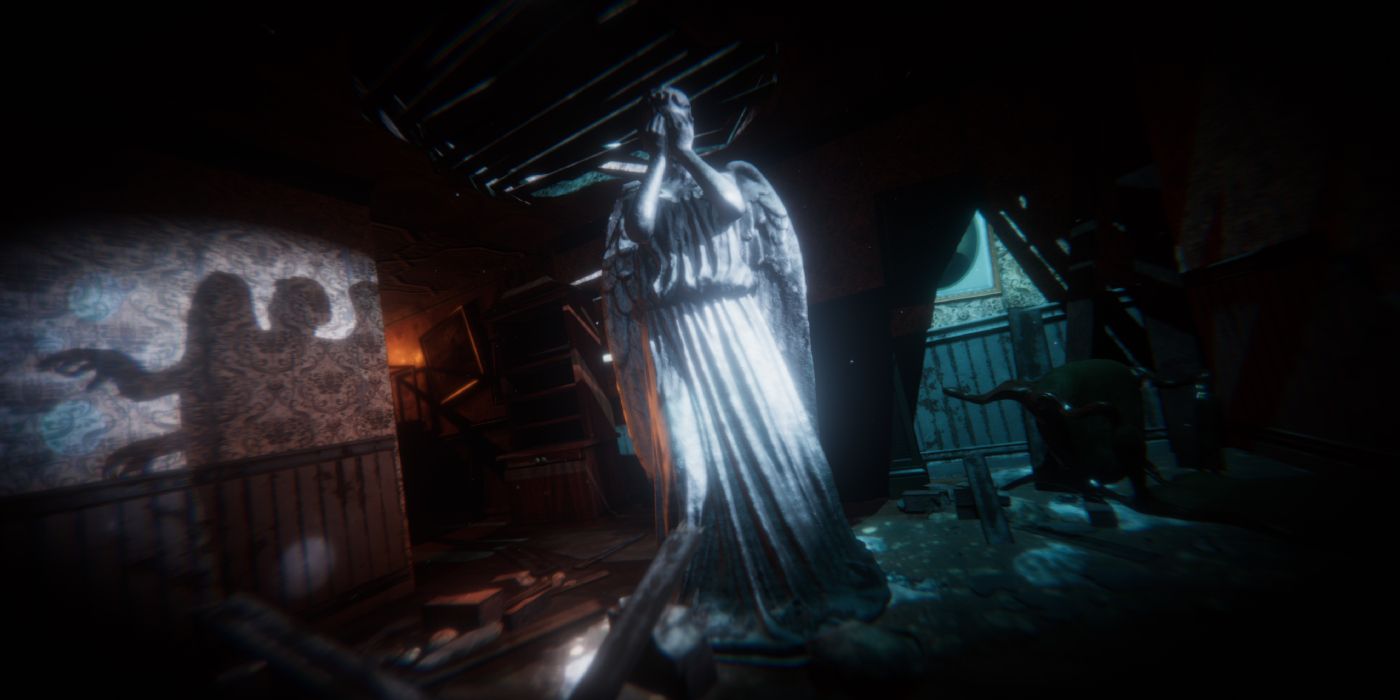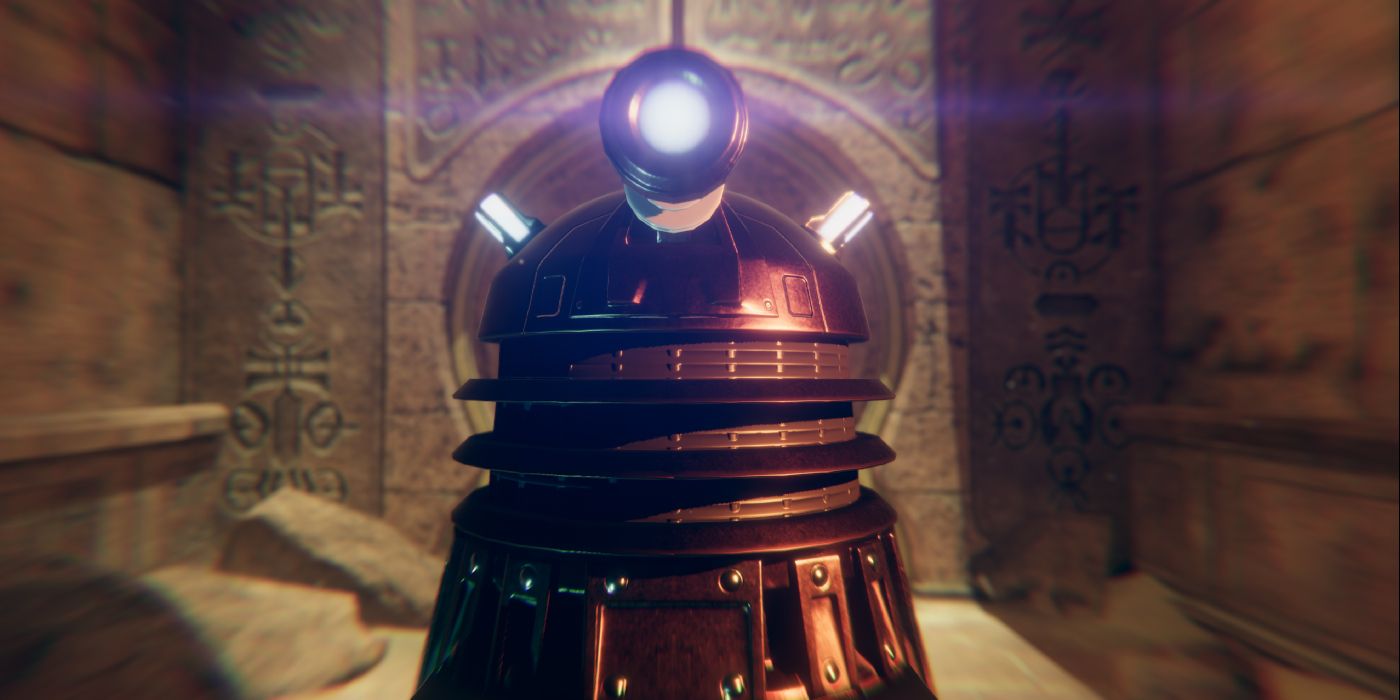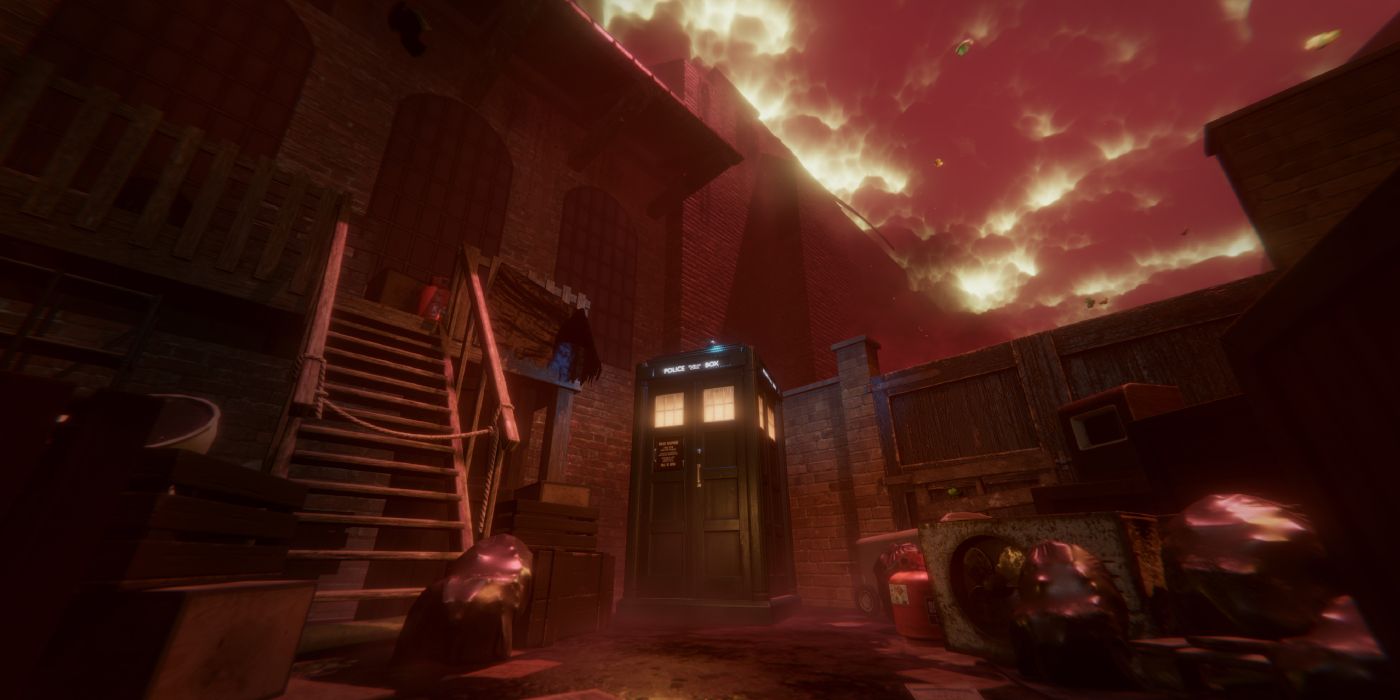Let’s get this out of the way first: yes, you get to play with a sonic screwdriver in VR in Doctor Who: The Edge of Time. In fact, this happens in the first ten minutes of the game, and the Doctor’s trusty tool factors into a number of the interactive sequences. Those moments will probably be exactly what fans are looking for in a licensed VR experience, but it does little to jostle the otherwise conventional gameplay and yawn-inducing set pieces which abound in the limited run-time available here. Aside from a few bright moments, The Edge of Time feels rather humdrum at best, and like a tired evocation of early escape room core VR concepts at worst, with unreliable tracking and incessant audio encouraging you to complete your Doctor Who experience as soon as possible.
It all starts in a laundromat, but a damaged time stream event means that you’ll have to make your way outside into a corrupted city under a maroon sky. After some truly dull “puzzling” (a predictable jump scare, figuring out a safe code, finding two arbitrary items) you’re able to enter the TARDIS itself, a genuinely interesting and memorable moment that feels like the best fan service on offer. From here, you’ll communicate with the Thirteenth Doctor as you’re whisked away to specific coordinates to retrieve a few time gems (is this even a canonical Doctor Who artifact?). Each temporal location changes up the scenery and offers a few stock-standard light puzzles, all the while ramping up a minimal sense of drama and threat.
On PlayStation VR, The Edge of Time really does seem like a deep throwback experience. The tracking of the motion controllers seems to be always be on the fritz with frequent immersion-breaking drift. Navigation is controlled via both teleportation and direct movement and, to its credit, neither method ever prompted any kind of nausea or dizziness (in stark contrast to the recently-released Golem). Unfortunately, there’s a strange limitation on teleportation speed and distance, with only extremely short jumps available and some invisible timer set which prevents players from re-teleporting for two seconds. Not sure we’ve encountered that particular setting in another VR game before, and whether it’s built into this one to artificially extend its play-time or perhaps counteract the dizziness factor is unclear.
Head tracking doesn’t fare much better, and there’s a consistent and weirdly imprecise shifting of the player viewpoint when moving your head around. Perhaps this is due to the availability of both standing and seated play options, but peering over a surface usually causes the perspective to disengage and slightly slide around. Resetting the headset never really fully corrected this, but it’s a relatively minor detail, since there’s rarely any reason to thoroughly inspect tables or containers.
No, Doctor Who: The Edge of Time is usually very upfront about what items need to be interacted with. Targeting is very unreliable, but moving your virtual hands around will highlight the items and handles required for any given scenario, and it feels something like an old-school point-and-click adventure to test for what is or isn’t interactive—essentially, it’s an extremely modern version of “pixel-hunting.”
In modern VR games, though, interaction isn’t the whole reason for the tech. Licensed properties can offer an easy thrill with the opportunity to really dig your claws into a beloved franchise’s iconography and scenery. Oddly, the game incessantly cajoles you forward, rambling instructions and vague tips in your earpiece whenever you take too long on a single scene. In the aforementioned intro, the apocalyptic vision of the back alley was quite dazzling at first, but a repeated insistence to build a device and complete the scenario made it seem like time was limited, which was actually false.
The TARDIS does look fantastic, inside and out, though fussing with the gears and levers to materialize to the next chapter is an extremely clumsy process, further hindered by the fiddly Motion Controller tracking. Like most any other interaction in the game, it takes the form of a simplistic and recognizable VR task, with this one being a short Simon-styled memorization task. An early chapter even features an incredibly banal reflecting-laser-mirror puzzle. These are all interactivity concepts that may have been welcome in the first years of VR, but just seem dusty in the present day, only marginally boosted here by the Doctor Who licensing. A haunted house scenario which follows is actually one of the more effective sections of the game, but it’s also hard to describe it as bringing anything new and exciting to the platform.
There’s a general lack of detailed textures on the PS4, which makes things look predictably drab in any outdoor non-urban environments, but the overall look of the game is otherwise attractive and colorful (especially in the Weeping Angels chapter). The sound design—aside from the rampant nudging by NPCs to get it all over with—is also of generally high quality, with crisp sound effects and high quality music. The vocal performances by the few A-listers and side characters are quite good, it’s just hard to give them the benefit of the doubt when they repeat the same barks, patronizing compliments, and snarky clues over and over.
Doctor Who: The Edge of Time doesn’t really feel like a 2019 VR game, with simplistic VR tropes and mostly obvious puzzles. As a result, the quality of the experience relies too heavily on its licensing to communicate any significant quality. If it was a lower-priced game it would be easier to recommend it to more people just as a brief Doctor Who carnival ride on modern tech, but $24.99 is too high a price-point for something with such minimal replay value. It’s a shame, because the property is one that has rarely seen excellence in its video game adaptations, and VR is certainly a great home for the concept. Hardcore Whovians probably already bought this on day one, but it’s otherwise only worth a look on a discount.
Doctor Who: The Edge of Time is out now on certain PC VR platforms and PlayStation VR. A digital code for PlayStation VR was provided to Screen Rant, for purposes of review.




